 The title of this Etgar Keret story describes his writing, which takes readers on humorous, often shocking journeys to worlds so absurd they could only exist outside our own. Keret developed a special interest in parallel universe theory when told that thinking about them helped his father get through the privations of Jewish persecution in World War 2 Europe. Although Parallel Universes fits the Keret mould in terms of the absurd contrasts between the described worlds, it is also a poignant love story that ends: I enjoy knowing there’s one place … where I’m falling asleep happy. More…
The title of this Etgar Keret story describes his writing, which takes readers on humorous, often shocking journeys to worlds so absurd they could only exist outside our own. Keret developed a special interest in parallel universe theory when told that thinking about them helped his father get through the privations of Jewish persecution in World War 2 Europe. Although Parallel Universes fits the Keret mould in terms of the absurd contrasts between the described worlds, it is also a poignant love story that ends: I enjoy knowing there’s one place … where I’m falling asleep happy. More…
Archives
The Elephant Vanishes
 The major theme of this surreal mystery by Haruki Murakami is how commercialism and modernization have upset Japan’s traditional social order. Other themes include unity, perception, disillusionment, alienation, paralysis, isolation and connection. An aging elephant and keeper symbolize the old ways, destined to vanish when displaced by urban development. The city’s absurd responses to the disappearance signify the uneasiness and confusion brought about by the changes. The narrator, a loner used to unity and balance in his life, becomes so disoriented by what he saw on the night of the disappearance that he is unable to make important decisions. More…
The major theme of this surreal mystery by Haruki Murakami is how commercialism and modernization have upset Japan’s traditional social order. Other themes include unity, perception, disillusionment, alienation, paralysis, isolation and connection. An aging elephant and keeper symbolize the old ways, destined to vanish when displaced by urban development. The city’s absurd responses to the disappearance signify the uneasiness and confusion brought about by the changes. The narrator, a loner used to unity and balance in his life, becomes so disoriented by what he saw on the night of the disappearance that he is unable to make important decisions. More…
Circular Ruins
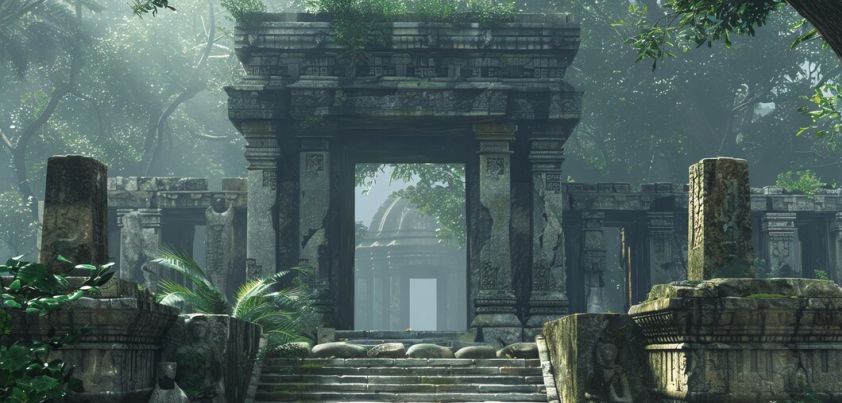 In this story by Jorge Borges, a mystic arrives at the overgrown, burnt-out ruins of an ancient temple. Living as an ascetic, his purpose is to “dream” a man into existence, initiate him into the riddles of the universe, and send him to inhabit another temple. Before they part, he manipulates his creation’s memory so neither he nor anyone else will know he is a spirit. Later, on the point of death, the mystic learns that he, too, is the product of a dream. Themes include philosophical idealism, dreams vs. reality, the circle of life, creation, religion and spirituality. More…
In this story by Jorge Borges, a mystic arrives at the overgrown, burnt-out ruins of an ancient temple. Living as an ascetic, his purpose is to “dream” a man into existence, initiate him into the riddles of the universe, and send him to inhabit another temple. Before they part, he manipulates his creation’s memory so neither he nor anyone else will know he is a spirit. Later, on the point of death, the mystic learns that he, too, is the product of a dream. Themes include philosophical idealism, dreams vs. reality, the circle of life, creation, religion and spirituality. More…
The Handsomest Drowned Man in the World
 This story from Gabriel Marquez describes how the body of a huge man washed in from the sea transforms a drab, sleepy fishing village. The body goes through stages of being admired for its power and good looks, pitied for the inconvenience being so large must have caused, given a name, claimed by the village as one of its own, and re-buried at sea with great dignity. The people feel such pride in being associated with the unknown man that their celebrations of his life turn the village into a famous landmark. Themes: myth creation, perceptions and influence of beauty. More…
This story from Gabriel Marquez describes how the body of a huge man washed in from the sea transforms a drab, sleepy fishing village. The body goes through stages of being admired for its power and good looks, pitied for the inconvenience being so large must have caused, given a name, claimed by the village as one of its own, and re-buried at sea with great dignity. The people feel such pride in being associated with the unknown man that their celebrations of his life turn the village into a famous landmark. Themes: myth creation, perceptions and influence of beauty. More…
Axolotl
 Julio Cortázar gives away the plot of this story in the first paragraph: There was a time when I thought a great deal about the axolotls… Now I am an axolotl. The rest of the story talks about this Kafkaesque transformation, which is partial and may have only occurred in the protagonist’s mind. He (the axolotl part) sits in an aquarium tank watching himself (the unchanged part) looking in from the other side. Considering his life from this perspective seemingly builds the man’s self-esteem, and he no longer feels the need to return. Themes: loneliness, alienation, obsession, connection, enlightenment, inertia. More…
Julio Cortázar gives away the plot of this story in the first paragraph: There was a time when I thought a great deal about the axolotls… Now I am an axolotl. The rest of the story talks about this Kafkaesque transformation, which is partial and may have only occurred in the protagonist’s mind. He (the axolotl part) sits in an aquarium tank watching himself (the unchanged part) looking in from the other side. Considering his life from this perspective seemingly builds the man’s self-esteem, and he no longer feels the need to return. Themes: loneliness, alienation, obsession, connection, enlightenment, inertia. More…
The Garden of Forking Paths
 The themes of this story from Jorge Borges are order vs. disorder, time, and sacrifice. An ancient Chinese scholar gave up everything to write a book and create a labyrinth. No one could understand the book or find the labyrinth until a modern day sinologist solved the mystery. The book is the labyrinth; it argues that time is not linear, but a starting point for an infinite number of paths. A descendant of the scholar murders the sinologist. This has nothing to do with the book, but rather a cause he doesn’t believe in. More…
The themes of this story from Jorge Borges are order vs. disorder, time, and sacrifice. An ancient Chinese scholar gave up everything to write a book and create a labyrinth. No one could understand the book or find the labyrinth until a modern day sinologist solved the mystery. The book is the labyrinth; it argues that time is not linear, but a starting point for an infinite number of paths. A descendant of the scholar murders the sinologist. This has nothing to do with the book, but rather a cause he doesn’t believe in. More…
The Rememberer
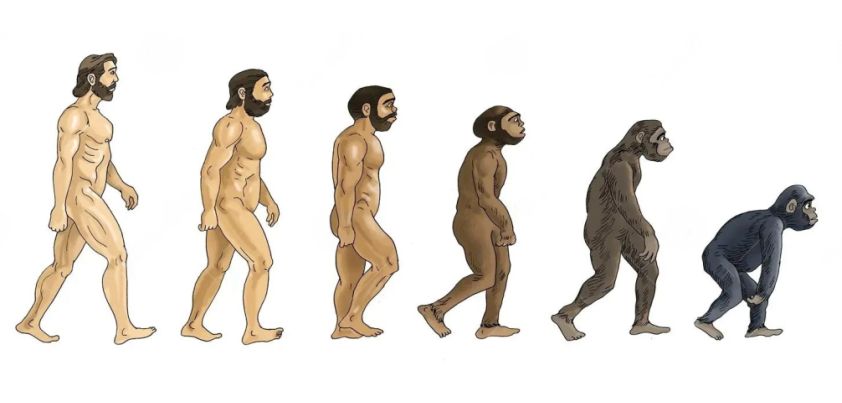 In this story from Aimee Bender, a man who is so sad about the world that he laments thinking about it has a wish come true. For no apparent reason he begins to experience reverse evolution, shedding millions of years a day. He regresses into an ape, then a sea turtle, and finally a small salamander, which his lover frees into the ocean. All she has left is her memories of him, which she clings to because if he’s not here, it’s her job to remember. Themes include overthinking and emotional detachment, love and caregiving, loss and remembrance. More…
In this story from Aimee Bender, a man who is so sad about the world that he laments thinking about it has a wish come true. For no apparent reason he begins to experience reverse evolution, shedding millions of years a day. He regresses into an ape, then a sea turtle, and finally a small salamander, which his lover frees into the ocean. All she has left is her memories of him, which she clings to because if he’s not here, it’s her job to remember. Themes include overthinking and emotional detachment, love and caregiving, loss and remembrance. More…
The Curious Case of Benjamin Button
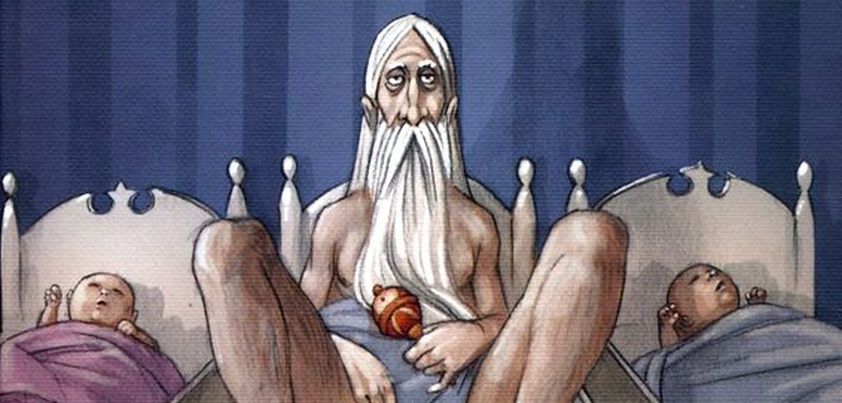 This F. Scott Fitzgerald story recounts the life of a man who grows “younger” by getting “older”. Themes include identity, social standing, and self-centeredness. The major theme, identity, is explored in the context of chronological age dictating expected behavior (e.g. “young” Benjamin obliges his father by constantly breaking things, whereas his “old” body would rather be smoking cigars). The people around Benjamin care more about protecting their reputations against gossip and scandal than they do about his condition. Finally, Benjamin proves himself as heartless as they are by hiding the problem and luring an unsuspecting woman into a doomed marriage. More…
This F. Scott Fitzgerald story recounts the life of a man who grows “younger” by getting “older”. Themes include identity, social standing, and self-centeredness. The major theme, identity, is explored in the context of chronological age dictating expected behavior (e.g. “young” Benjamin obliges his father by constantly breaking things, whereas his “old” body would rather be smoking cigars). The people around Benjamin care more about protecting their reputations against gossip and scandal than they do about his condition. Finally, Benjamin proves himself as heartless as they are by hiding the problem and luring an unsuspecting woman into a doomed marriage. More…
Two Words
 In this story by Isabel Allende a young woman has become famous, traveling an unnamed South American country by foot delivering news, storytelling, writing letters for people, and selling “secret” words that have magical powers. One day, a feared bandit/rebel leader forces her to write a motivating political speech to help him become president. On departing, she whispers two words in his ear. The speech is such a success he becomes the favorite to win the election. However, obsessed by the meaning of her two words, he withdraws into himself. Themes include hardship, courage and determination, loneliness, the power of words. More…
In this story by Isabel Allende a young woman has become famous, traveling an unnamed South American country by foot delivering news, storytelling, writing letters for people, and selling “secret” words that have magical powers. One day, a feared bandit/rebel leader forces her to write a motivating political speech to help him become president. On departing, she whispers two words in his ear. The speech is such a success he becomes the favorite to win the election. However, obsessed by the meaning of her two words, he withdraws into himself. Themes include hardship, courage and determination, loneliness, the power of words. More…
Blow-Up
 After a commentary on the role of perspective and the art of storytelling, this Julio Cortázar story goes on to describe how an amateur photographer captures an image that seemingly comes alive, rewriting its narrative. While taking the photograph (of an adolescent boy in an obviously uncomfortable discussion with an adult woman) he comes up with several possible interpretations of what is taking place and what may happen afterwards. Things take a dark turn when he realizes that a man in a nearby car is part of the narrative. Themes include storytelling, narrative perspective, speculation, obsession, artistic imagery vs. reality. More…
After a commentary on the role of perspective and the art of storytelling, this Julio Cortázar story goes on to describe how an amateur photographer captures an image that seemingly comes alive, rewriting its narrative. While taking the photograph (of an adolescent boy in an obviously uncomfortable discussion with an adult woman) he comes up with several possible interpretations of what is taking place and what may happen afterwards. Things take a dark turn when he realizes that a man in a nearby car is part of the narrative. Themes include storytelling, narrative perspective, speculation, obsession, artistic imagery vs. reality. More…
A Very Old Man With Enormous Wings
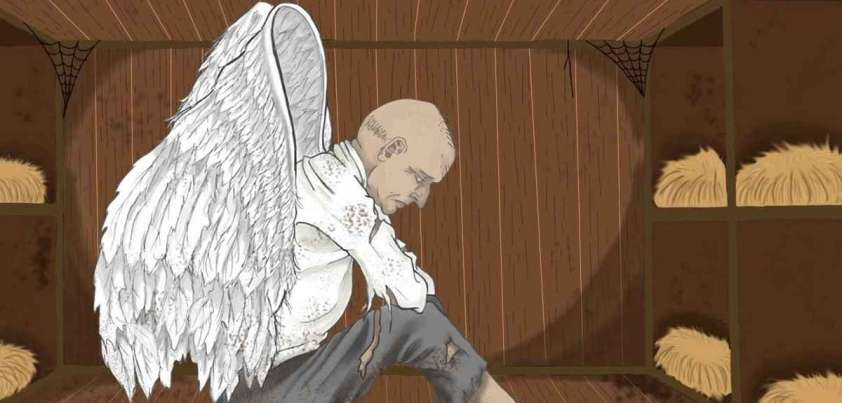 The major themes of this story by Gabriel García Márquez are doubt, cruelty and greed, and common reactions to those who appear strange or “different”. The treatment of the out of sorts angel and “spider girl” evoke genuine pathos and carry allusions to how some countries lock up refugees in miserable conditions and the likes of Joseph Merrick (the deformed gentleman paraded around 19th century England as The Elephant Man). The only uplifting moment comes when the innocent child climbs through a hole in the old man’s cage to play with him. Other themes include suffering, religion and the supernatural. More…
The major themes of this story by Gabriel García Márquez are doubt, cruelty and greed, and common reactions to those who appear strange or “different”. The treatment of the out of sorts angel and “spider girl” evoke genuine pathos and carry allusions to how some countries lock up refugees in miserable conditions and the likes of Joseph Merrick (the deformed gentleman paraded around 19th century England as The Elephant Man). The only uplifting moment comes when the innocent child climbs through a hole in the old man’s cage to play with him. Other themes include suffering, religion and the supernatural. More…
The Invention of Morel
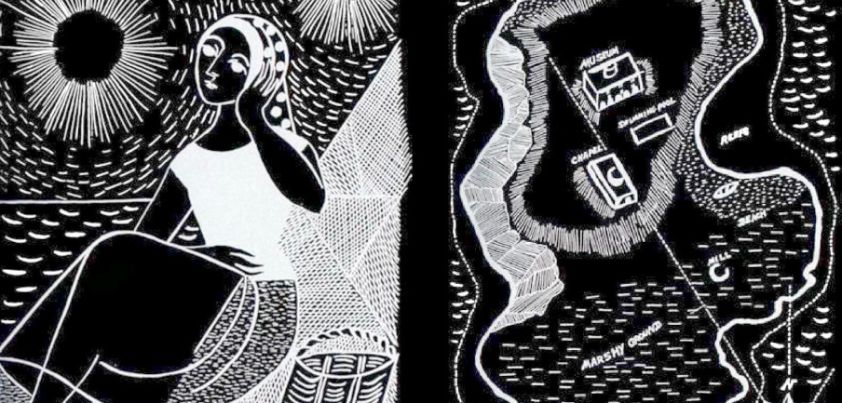 This story by Adolfo Bioy Casares is in the form a diary by a Venezuelan fugitive who, after a hundred days hiding on a deserted Pacific island, is disturbed by what appear to be a group of tourists. He watches them for several days and becomes infatuated with a “gypsy-like” woman in the group. When he approaches her, she (and later the other tourists) act as if he doesn’t exist. In reality, it is she (and they) who don’t exist and his dying wish is to join them. Themes include isolation, love, obsession, metaphysics (illusion vs. reality), scientific hubris, immortality. More…
This story by Adolfo Bioy Casares is in the form a diary by a Venezuelan fugitive who, after a hundred days hiding on a deserted Pacific island, is disturbed by what appear to be a group of tourists. He watches them for several days and becomes infatuated with a “gypsy-like” woman in the group. When he approaches her, she (and later the other tourists) act as if he doesn’t exist. In reality, it is she (and they) who don’t exist and his dying wish is to join them. Themes include isolation, love, obsession, metaphysics (illusion vs. reality), scientific hubris, immortality. More…
Open It / Khol Do
 Set in the aftermath of India’s Partition, this story by Saadat Hasan Manto highlights how a total breakdown in law-and-order led to many predatory attacks against women. A father, separated from his seventeen-year-old daughter as they fled after his wife was disembowelled in front of them, desperately searches for her in a refugee camp for Indian Muslims evacuated to Pakistan. Some camp volunteers agree to look for the girl. They are successful, but do not return her. When found, her corpse displays a shocking conditioned reflex. Themes include displacement, chaos, gendered violence, depravity, fatherly love, despair. More…
Set in the aftermath of India’s Partition, this story by Saadat Hasan Manto highlights how a total breakdown in law-and-order led to many predatory attacks against women. A father, separated from his seventeen-year-old daughter as they fled after his wife was disembowelled in front of them, desperately searches for her in a refugee camp for Indian Muslims evacuated to Pakistan. Some camp volunteers agree to look for the girl. They are successful, but do not return her. When found, her corpse displays a shocking conditioned reflex. Themes include displacement, chaos, gendered violence, depravity, fatherly love, despair. More…
The Falling Girl
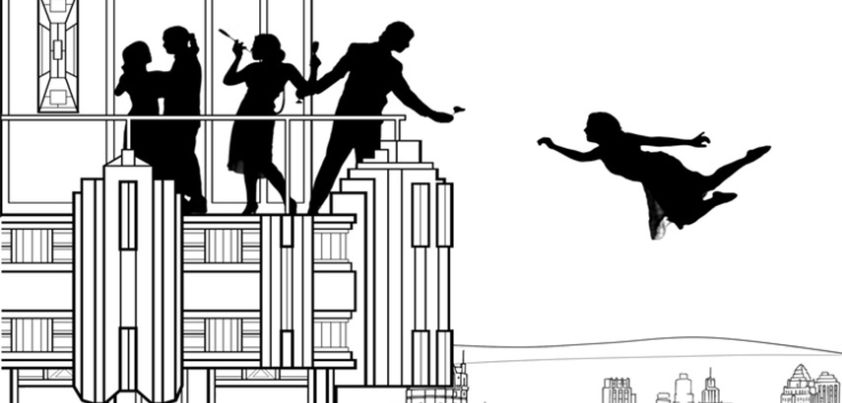 The meaning of this thought-provoking story by Dino Buzzati is reflected in both the building and the girl. The skyscraper is a metaphor for society: the idle rich party at the “top”, as the working class scurry about at the bottom. The story represents an attractive young woman’s journey from the glamor and excitement of the “high life” to the loneliness, frailty and fears of old age. In the sad conclusion, she has no one to mourn her (hear the “thud”) when she hits the ground. Themes include social class, consumerism, envy, lack of fulfilment, ageing, alienation and loneliness. More…
The meaning of this thought-provoking story by Dino Buzzati is reflected in both the building and the girl. The skyscraper is a metaphor for society: the idle rich party at the “top”, as the working class scurry about at the bottom. The story represents an attractive young woman’s journey from the glamor and excitement of the “high life” to the loneliness, frailty and fears of old age. In the sad conclusion, she has no one to mourn her (hear the “thud”) when she hits the ground. Themes include social class, consumerism, envy, lack of fulfilment, ageing, alienation and loneliness. More…
The Library of Babel
 Jorge Borges is known for his unusual and sometimes complex stories which connect things that don’t seem real or possible with the themes of metaphysics and religion. The Library of Babel also includes several other themes commonly found in Borges’s work: infinity, language and order vs. randomness. The Library, which is composed of a seemingly endless number of galleries, is an allegory for the universe. The books within the galleries are incomprehensible. The librarians, who represent mankind, search for the gallery of a mythical “Man of Books” (God?), thought to contain a compendium volume which may unlock the Library’s secrets. More…
Jorge Borges is known for his unusual and sometimes complex stories which connect things that don’t seem real or possible with the themes of metaphysics and religion. The Library of Babel also includes several other themes commonly found in Borges’s work: infinity, language and order vs. randomness. The Library, which is composed of a seemingly endless number of galleries, is an allegory for the universe. The books within the galleries are incomprehensible. The librarians, who represent mankind, search for the gallery of a mythical “Man of Books” (God?), thought to contain a compendium volume which may unlock the Library’s secrets. More…
Eyes of a Blue Dog
 This story from Gabriel Garcia Márquez takes place in the narrator’s mind. While in a dream state, the man’s unconscious reflects his lack of connection in the real world by conjuring up an ongoing relationship with a woman in which each desires the other but they cannot touch. In the man’s absence, the woman wanders the city searching for him, calling out and writing Eyes of a Blue Dog, code words by which they will recognize each other. When awake, the man has no recollection of the dreams. Themes include loneliness and isolation, love and desire, frustration, longing, connection. More…
This story from Gabriel Garcia Márquez takes place in the narrator’s mind. While in a dream state, the man’s unconscious reflects his lack of connection in the real world by conjuring up an ongoing relationship with a woman in which each desires the other but they cannot touch. In the man’s absence, the woman wanders the city searching for him, calling out and writing Eyes of a Blue Dog, code words by which they will recognize each other. When awake, the man has no recollection of the dreams. Themes include loneliness and isolation, love and desire, frustration, longing, connection. More…
The Man Who Could Work Miracles (A Pantoum in Prose)
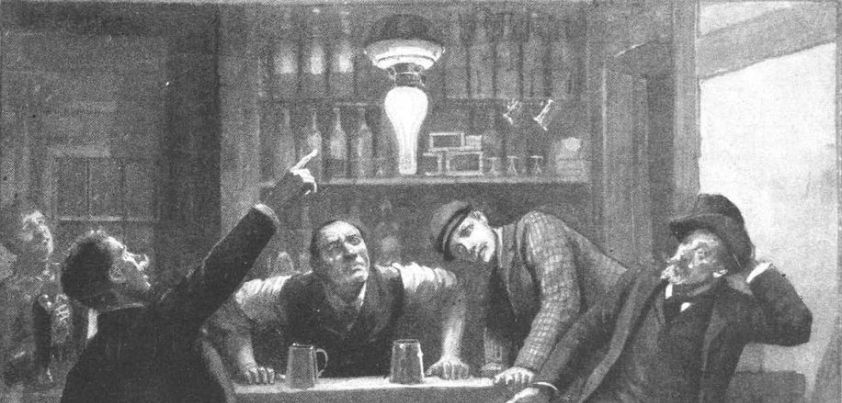 In this light-hearted story by H. G. Wells, a man known as a sceptic as far as miracles are concerned suddenly discovers he can make things happen just by thinking about them. After a few teething problems, such as sending a local police constable to Hades, he confides in his parish priest. Once convinced, the priest becomes so obsessed with using the miracle worker’s powers for good that he inadvertently encourages him to do something that brings about global catastrophe. Themes include the supernatural, power and responsibility, human frailty, the danger of interfering with nature, science vs. religion. More…
In this light-hearted story by H. G. Wells, a man known as a sceptic as far as miracles are concerned suddenly discovers he can make things happen just by thinking about them. After a few teething problems, such as sending a local police constable to Hades, he confides in his parish priest. Once convinced, the priest becomes so obsessed with using the miracle worker’s powers for good that he inadvertently encourages him to do something that brings about global catastrophe. Themes include the supernatural, power and responsibility, human frailty, the danger of interfering with nature, science vs. religion. More…
The Disk
 Jorge Borges gives this story a timeless quality by setting it in medieval times and framing it like a fairy-tale. A traveler arrives at an isolated woodcutter’s hut claiming to be an exiled king descended from Odin, the Norse king of the gods. He supports this by showing the woodcutter what he claimss to be the disk of Odin, the only one-dimensional object in the universe. Ironically, the woodcutter answers: I do not worship Odin, I worship Christ… and then kills him to possess Odin’s disk. Theme: the desire to own something that holds power over the world around us. More…
Jorge Borges gives this story a timeless quality by setting it in medieval times and framing it like a fairy-tale. A traveler arrives at an isolated woodcutter’s hut claiming to be an exiled king descended from Odin, the Norse king of the gods. He supports this by showing the woodcutter what he claimss to be the disk of Odin, the only one-dimensional object in the universe. Ironically, the woodcutter answers: I do not worship Odin, I worship Christ… and then kills him to possess Odin’s disk. Theme: the desire to own something that holds power over the world around us. More…
The Sea of Lost Time
 The seaside town in this story by Gabriel Garcia Marquez is a smelly, unpleasant place. With every incoming tide, the ocean brings garbage and rotting fish. Many people have moved away; the town is dying. Things change when a local man, Tobias, notices something different about the sea breeze. It smells like roses. Weekend visitors begin to arrive. There is music and dancing again. One of the visitors is a strange foreigner with bags of money. He gives it away to people who ‘do things’ for him, and one day shows Tobias the secret of what lies beneath the waves. More…
The seaside town in this story by Gabriel Garcia Marquez is a smelly, unpleasant place. With every incoming tide, the ocean brings garbage and rotting fish. Many people have moved away; the town is dying. Things change when a local man, Tobias, notices something different about the sea breeze. It smells like roses. Weekend visitors begin to arrive. There is music and dancing again. One of the visitors is a strange foreigner with bags of money. He gives it away to people who ‘do things’ for him, and one day shows Tobias the secret of what lies beneath the waves. More…
Jeffty is Five
 This story by Harlan Ellison is said to be an allegory of the power of childlike fantasy. The protagonist’s childhood friend remains “frozen in time”. As those around him age, the boy retains the body and mind of a five-year-old. Things get stranger when the protagonist discovers the boy is also living in the past. He tunes into new episodes of long discontinued radio shows, “sees” old movies when watching modern ones, and receives products from mail-order companies that no longer exist. Themes include childhood, friendship, nostalgia, past vs. present, desperation, the supernatural. More…
This story by Harlan Ellison is said to be an allegory of the power of childlike fantasy. The protagonist’s childhood friend remains “frozen in time”. As those around him age, the boy retains the body and mind of a five-year-old. Things get stranger when the protagonist discovers the boy is also living in the past. He tunes into new episodes of long discontinued radio shows, “sees” old movies when watching modern ones, and receives products from mail-order companies that no longer exist. Themes include childhood, friendship, nostalgia, past vs. present, desperation, the supernatural. More…